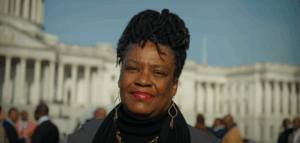Feb 2024
Community Violence Intervention Leadership Academy Week in Washington, D.C.
Projects
View highlights from the Community Violence Intervention Leadership Academy’s week in Washington, D.C. in February 2024 including capstone presentations, meeting with policymakers, and the graduation event at the White House with Vice President Kamala Harris.
Projects

CVI Leadership Academy: Application Information Session
View and download materials from the CVI Leadership Academy’s application information session.
On My OHM™: A Reset for Real Ones
Kheperah Kearse, Chief Wellness Officer at LIFE Camp, Inc., penned a resource for CVI leaders focused on self-regulation and wellness practices.

Video: The CVI Leadership Academy’s Third Cohort
This video features insights from the third cohort of the Community Violence Intervention Leadership Academy, a violence reduction program created to enhance the leadership and management skills of senior CVI leaders, enabling them to effectively run community-based organizations.

Video: U.S. Senator Dick Durbin of Illinois visits the Community Violence Intervention Leadership Academy
U.S. Senator Dick Durbin (Illinois) visited with the third cohort of the CVI Leadership Academy to discuss opportunities to invest in CVI at the state and local level.
Latest Updates
Curbing gun violence in Chicago doesn’t require that we first end poverty
Crime Lab leaders Katie Hill and Jens Ludwig penned an op-ed in the Chicago Tribune highlighting the root causes of gun violence and the growing body of research showing that increased neighborhood vibrancy generates surprisingly large changes in the prevalence of gun violence, by as much as 30%.

A fighting chance
In The University of Chicago Magazine’s Fall ’25 issue, Susie Allen profiles Crime Lab Pritzker Director Jens Ludwig to discuss his book, “Unforgiving Places,” which challenges conventional wisdom on gun violence and suggests new approaches to solving the problem.

Researchers: Violence intervention and policing should complement, not compete against, each other
The Crime Lab’s Executive Director Katie Hill and Pritzker Director Jens Ludwig discuss evidence-based solutions to crime, including violence intervention and data-driven policing, in an op-ed for the Chicago Tribune.

